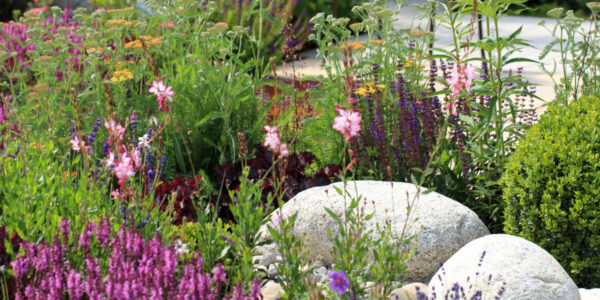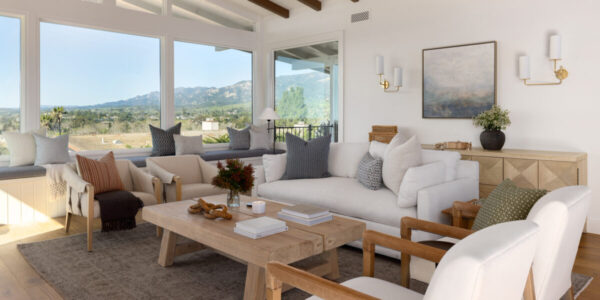
A Statement Stone Can Transform Any Outdoor Space—Here’s How to Do It Right
Expert advice on how to easily source and style boulders that won’t leave you between a rock and a hard place.
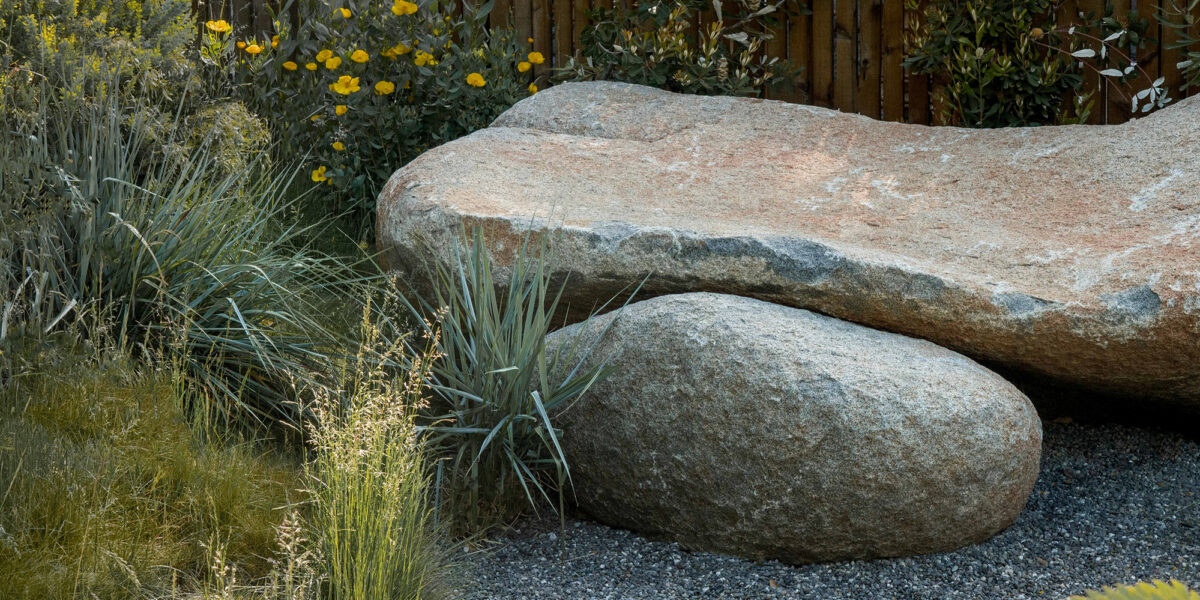
When it comes to landscaping design, Molly Sedlacek of the design firm ORCA is a standout in stone styling. And we’re not just talking about any stones, we’re talking bodacious boulders that can function both as furniture and art. But it’s not just the implementation of rocks that make their work unique, it’s the weaving of natural textures in wood, handmade pavers, and selective plant materials that evoke a wonderland of botanical intrigue in every design.
For ORCA’s most recent project, the team converted a hot, concrete terraced space into a shaded oasis with separate “rooms” for a family of three to relax, swim, and entertain in San Rafael, California. As part of the design, they sourced a massive statement boulder that would become a daybed for adults to sunbathe, and a climbing rock for kids. Weighing in at 10,000 pounds, the addition of this statement piece was no easy feat, having to be craned over two houses to its final resting place alongside a baby boulder that serves as its nesting rock.
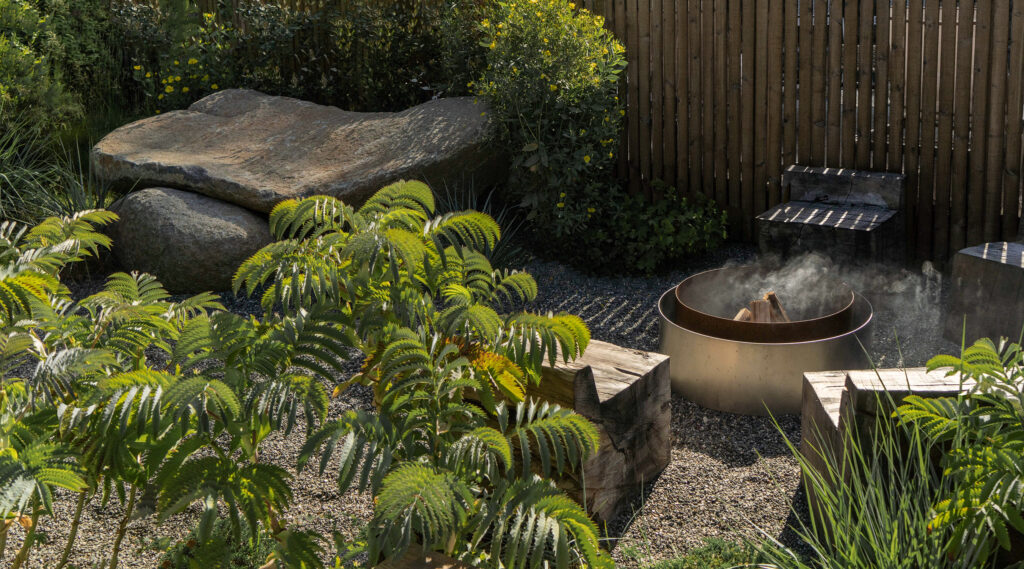
Courtesy of ORCA
A nesting rock you might ask? Indeed, Molly believes that all big rocks need a tiny rock to accompany them—Which leads to another question. What makes for a good boulder pairing or rock-to-plant pairing for that matter? What about small scale stone installs? Would those rules be applicable there too? Because let’s face it, not everyone has the ability or space to crane in massive rock matter, but ORCA proves that even the smallest stone installation can have massive impact.
With so many rock-solid questions, Molly came to our assistance with expert tips for enhancing your landscape using stone at any scale. Statement stone not your thing? Consider these suggestions applicable to your swale and rain garden projects too! Let’s rock n roll.
How to Choose a Stone
When it comes to recruiting the best rocks, there are two things to consider: Texture and color. Molly breaks down key details to keep you from feeling overwhelmed while browsing the stone yard:
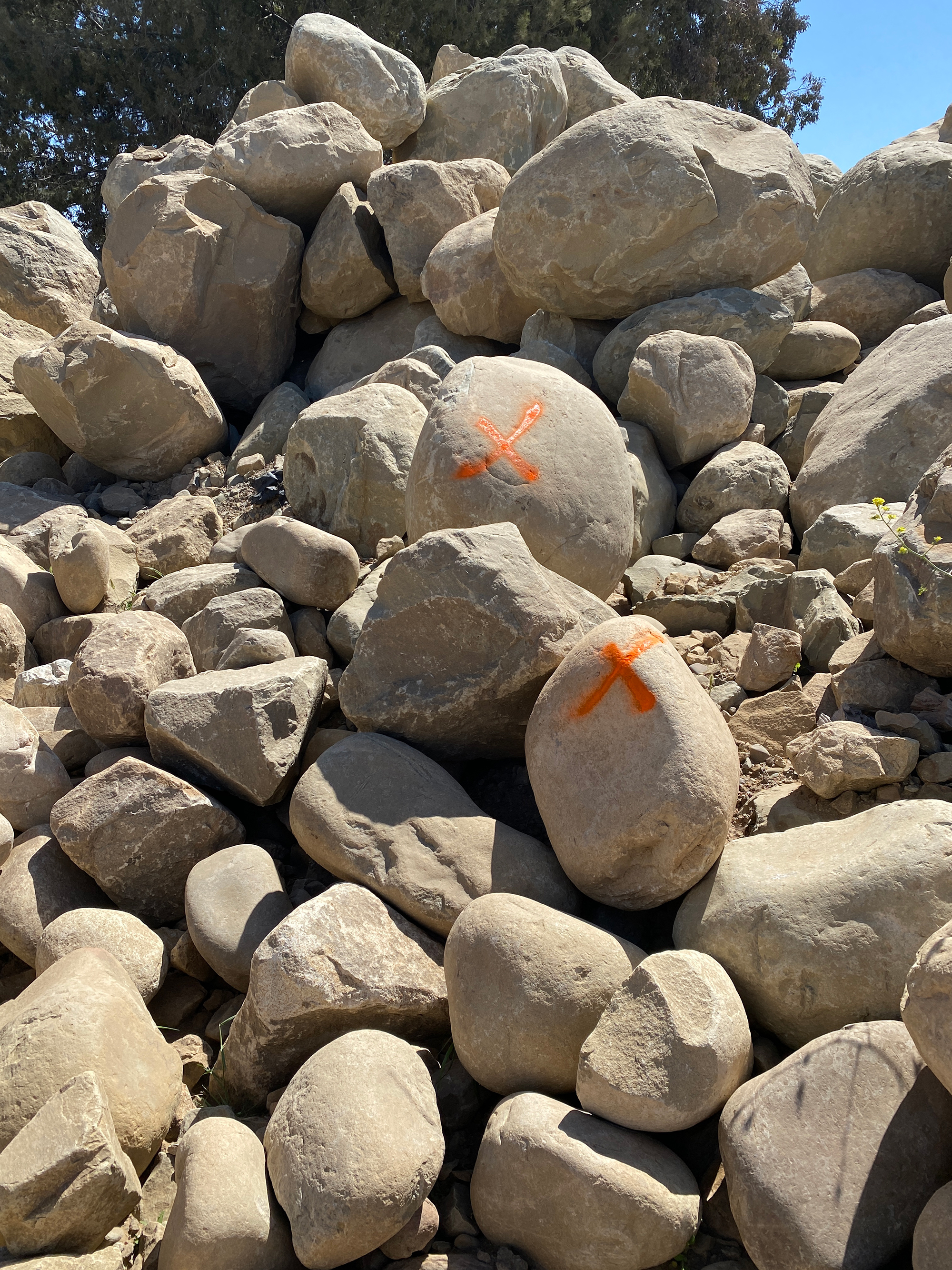
Courtesy of ORCA
Texture
It is important to complement the other materials in the garden with the boulder’s texture. Boulders tend to be either smooth and rounded, or more angular and jagged. A smooth edge is wonderful for puzzling together a rock wall that has natural dips in the top as a seat, whereas a more textured surface creates almost a jetty-like effect that looks wonderful with plant material spilling over it.
Color
Cooler-toned boulders such as granite pair well with gray undertone pathways, whereas sandstone reflects a warm earthiness that enhances California gold natives and rust accents. If you are feeling bold, a saturated boulder can become a moment of art in the garden such as a volcanic black, or pink travertine.
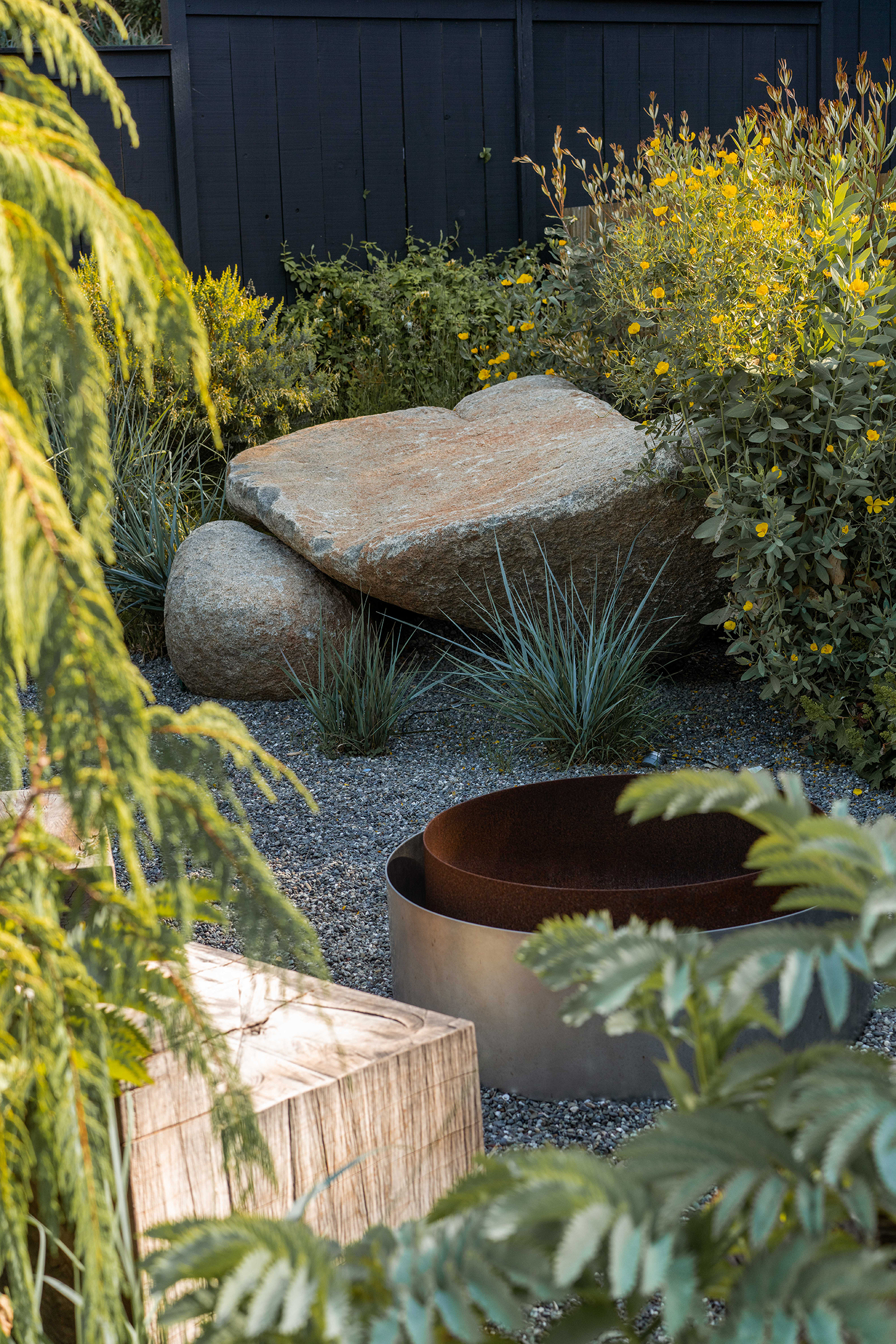
Courtesy of ORCA
Consider Rock Placement
Everybody has a best side, even stones. When sourcing, make sure to look at the rock from all angles and don’t be afraid to voice which one you like best. Molly suggests that, “New faces and texture present themselves depending on how you position the rock, and this becomes a key part of how it sits in the garden.”
If pairing two rocks together, give space for them to breathe. Molly advises, “If clustering, use the foreground for the lower rock (even digging one of the boulders into the ground can be wonderful to make it feel like it’s emerging) and place the largest boulder in the back. Even if a boulder isn’t necessarily massive in size, it can be positioned on its side to provide more visual weight in the garden. Placement is just as important as the material selection itself.”
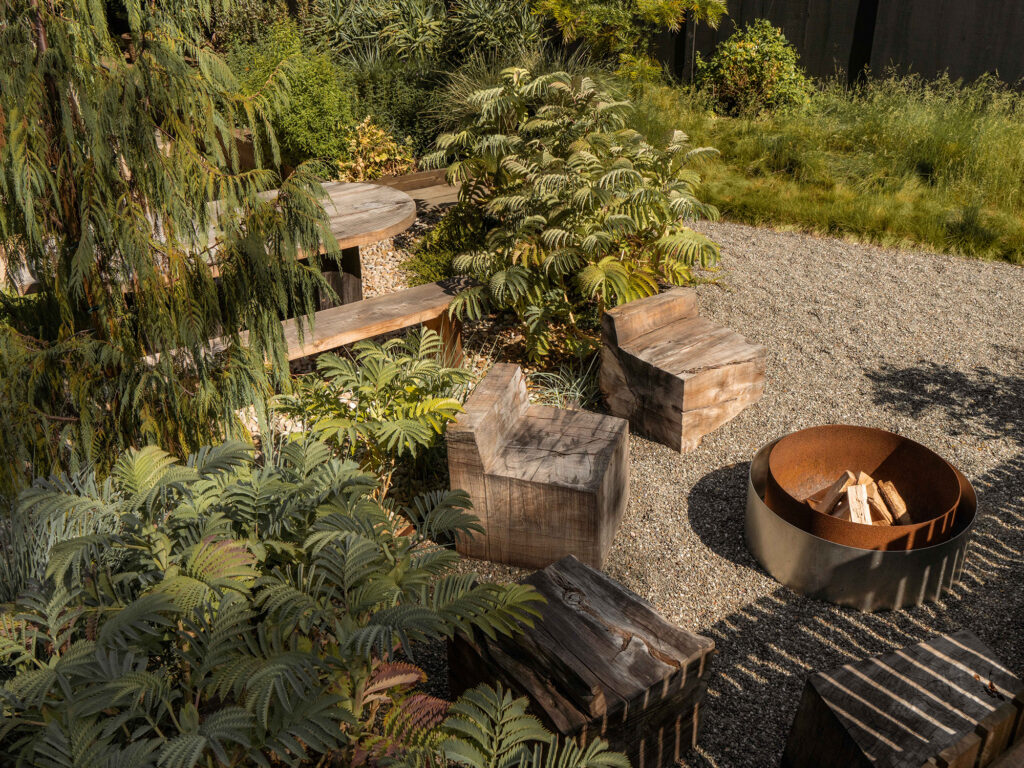
Courtesy of ORCA
Soften the Edge
A stone is just a stone without a plant accompaniment. Turn your garden into a thriving ecosystem filled with depth and life. Rocks not only protect against soil erosion and maintain moisture, they also aid in decomposing organic materials while interacting with the soil’s microbial activity, meaning you’ll have happier and healthier plants.
When it comes to adding botanicals into the design, Molly says, “plant material can either emphasize a boulder as art, or blur it into the garden and soften its presence. A boulder paired with Mountain Mahogany or a tree specimen puts visual weight on the relationship between the plant and the rock. Both are sculptural and positioning them together creates a unique dynamism. Another approach is to use spilling plants and moving grasses around a boulder to feather the materials together.”
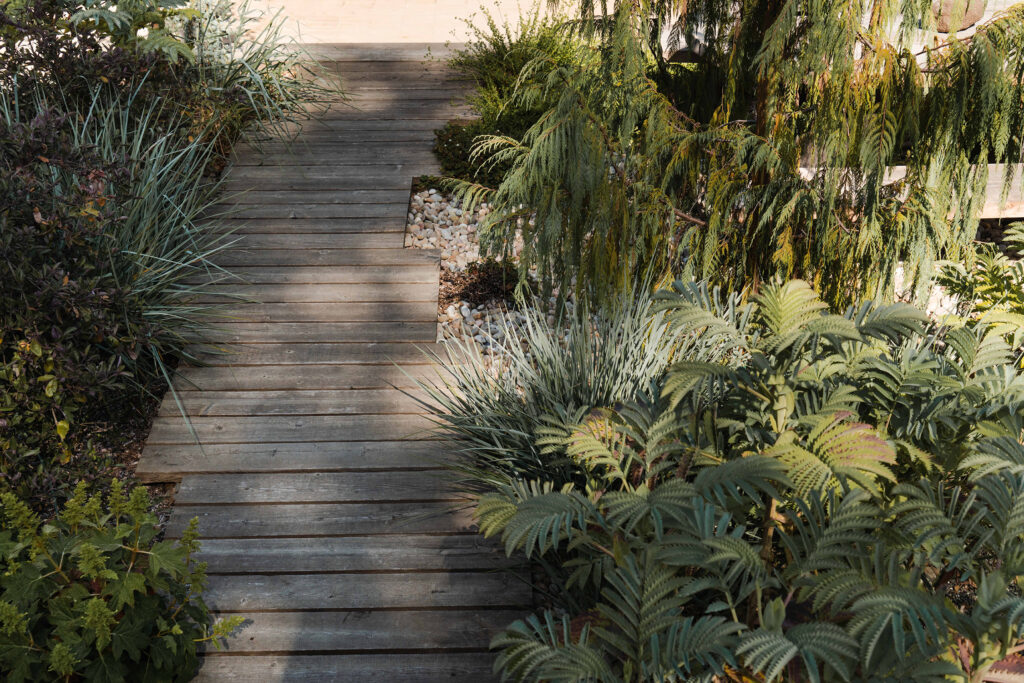
Courtesy of ORCA
Accessorize with Pavers and Pottery
One should never be afraid to experiment with additional texture and hardscapes—especially those permeable to rain. ORCA is a big fan of pairing pavers with boulders, expressing a playful exploration as the two materials can complement or contrast each other. Molly suggests adding in an outdoor tile or paver that provides texture and earthiness. ORCA even offers their own, called Earth Terrazzo, which is hand-made and composed of recycled material and rock aggregate in combination with native southern California boulders. If you’ve already selected a paver for your project, be sure to take a sample with you to the stone yard to ensure your boulders complement their style.
On a budget? Molly adds that “pottery is also a great added layer of texture. It allows you to also put punctuation on a special plant, or place plant material in areas that cannot be planted—such as a patio or where a wall footing is.” When it comes to styling pottery, stick to a cohesive color story choosing pots with similar tone and then mix and match their textures with abandonment.
